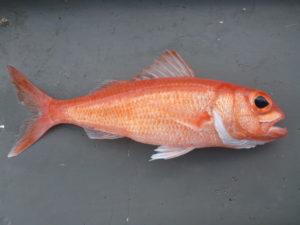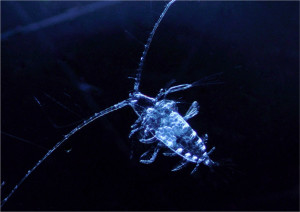Discovering a cryptic species pair of deepwater snappers
What started out as a project studying the population genetic structure of a commercially important deepwater snapper turned into a project documenting the discovery of a new species. Etelis carbunculus occurs at depths of 200-400m across the IndoPacific and goes by various names, including “Ruby snapper” and “Ehu.” Our genetic analyses revealed that Etelis carbunculus is actually comprised of two species that look nearly identical (a “cryptic species pair”). These two species both occur across the Indo-Pacific, and often occur in the same geographic region. This makes management difficult because it’s hard to monitor two species separately when you can’t tell them apart in the field! Fortunately, after staring at many, many fish, we found two subtle but diagnostic features that can distinguish the two species in the field: one species has a black spot at the tip of the upper caudal fin, and the two species differ in the shape of a small spine on the operculum.
To read more about this work, check out our news article and publications:
Discovering cryptic species complexes of beetles
A study of the population genetic structure of two click beetle species resulted in the discovery of potential cryptic species complexes. The larvae of these beetles are called “wireworms” and are important agricultural pests, but they look very similar across species. The adults may prove easier to distinguish morphologically.
To read more about this work, check out our publication:
Discovering a cryptic species pair of marine copepods
Once again, a project that started out studying population genetic structure unexpectedly turned into a project discovering a new species. This time the cryptic species pair was comprised of two small marine copepods, both of which occur across the global ocean in tropical and subtropical waters. The two species were often collected in the same plankton tow, indicating they occur in the same geographic regions, although it’s unknown whether they occur at different depths. No diagnostic morphological differences have been found between these two species.
To read more about this work, check out our publication:



